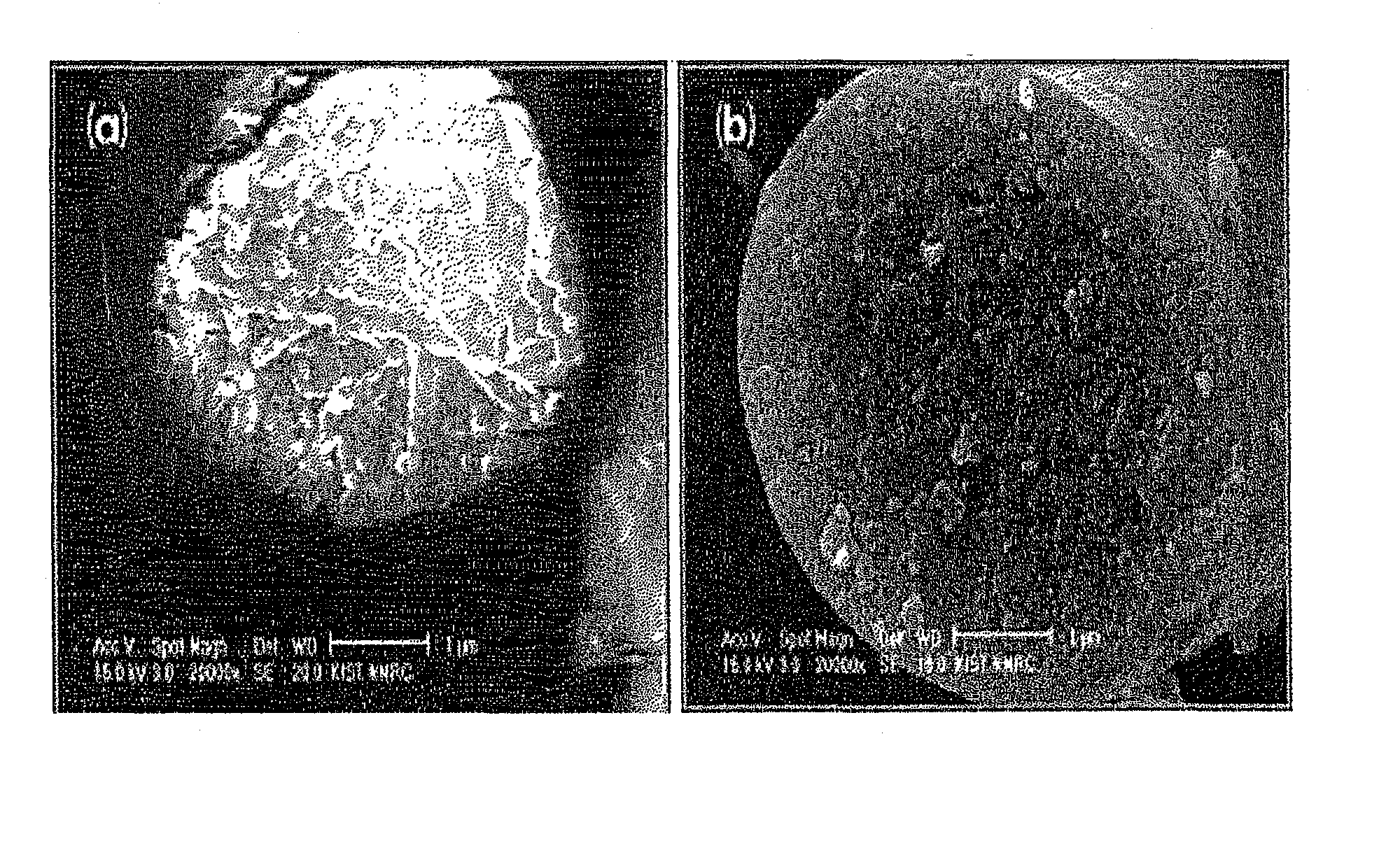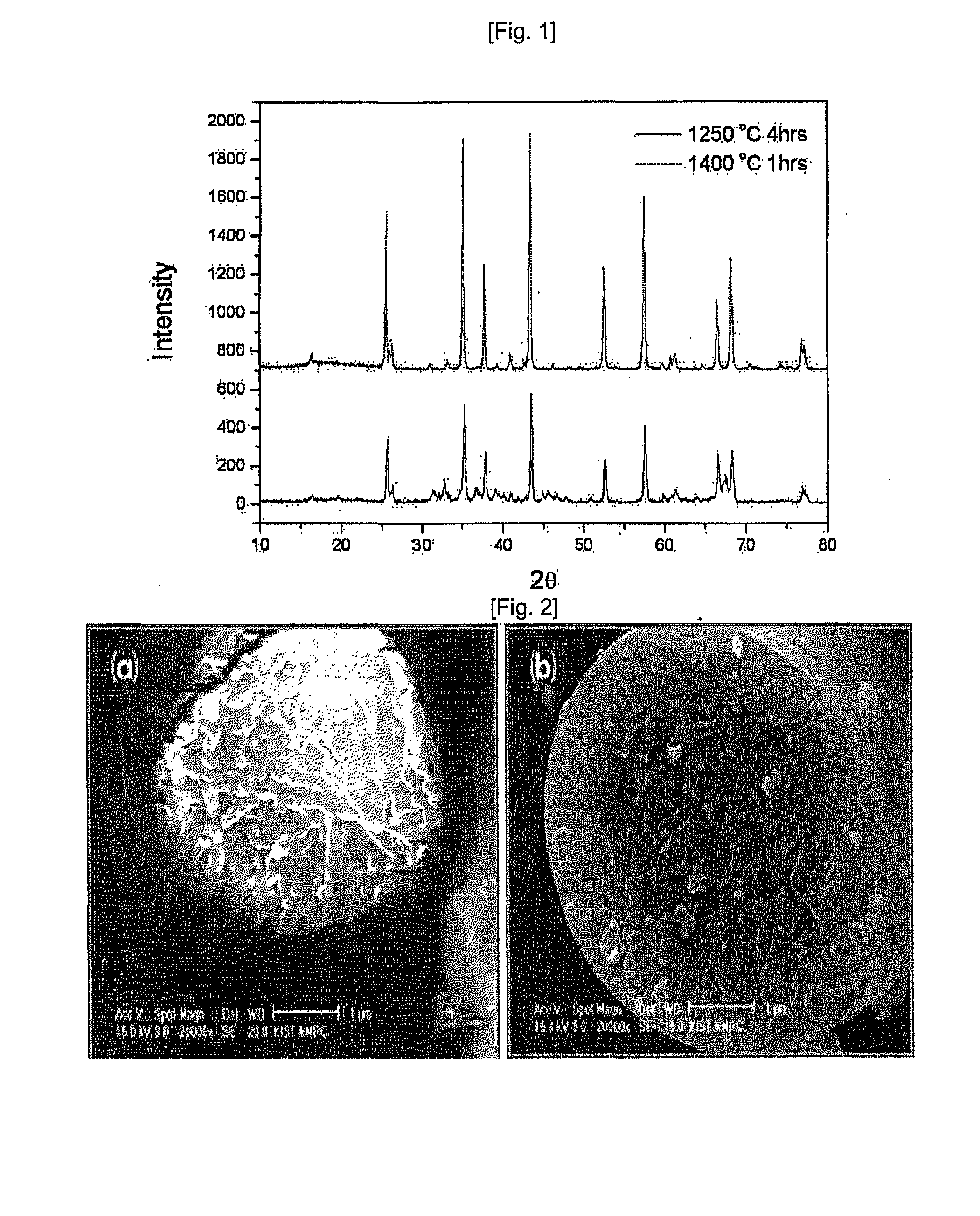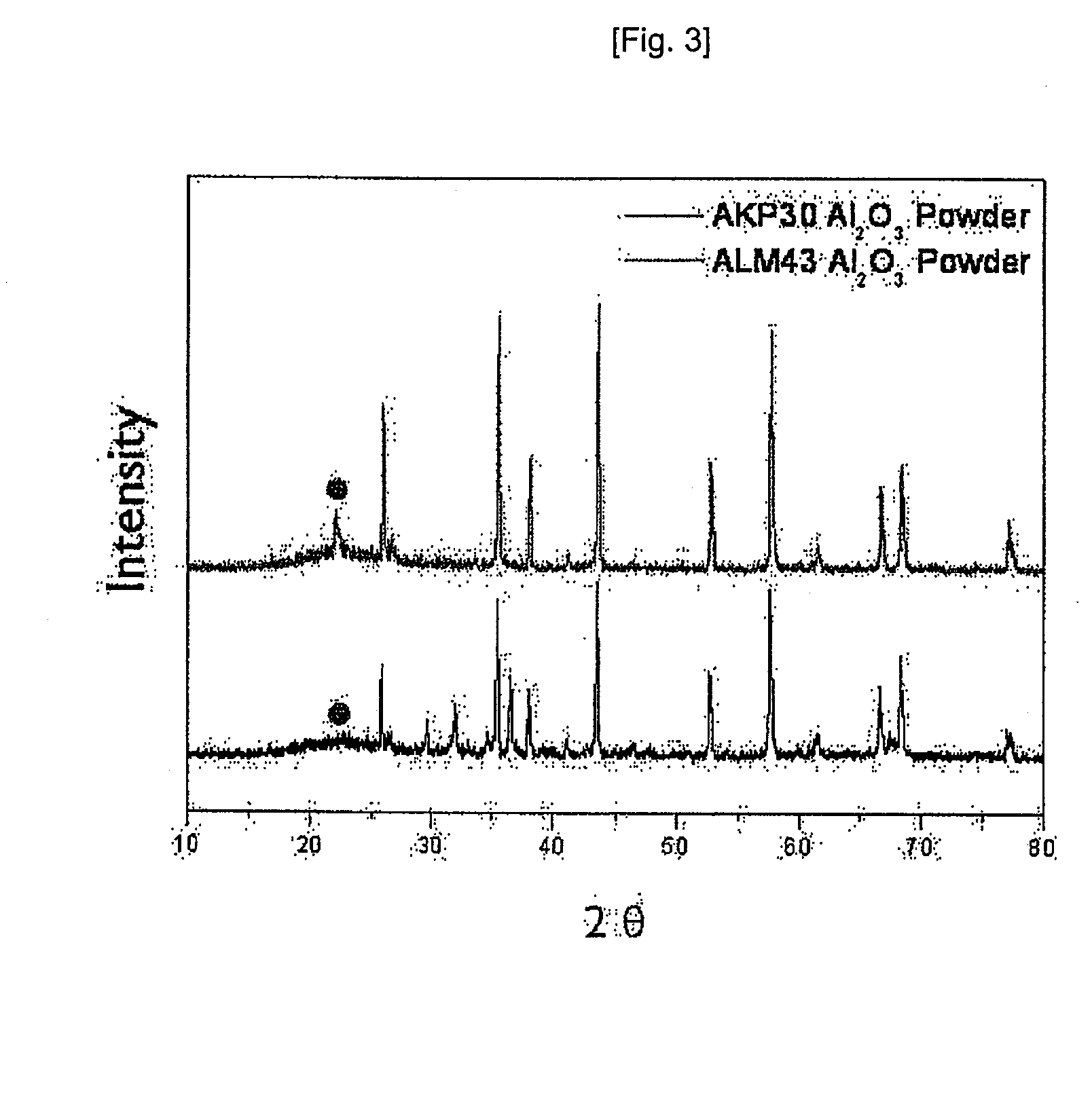Sealing composite for flat solid oxide fuel cell stack having high fracture resistance and the fabrication method thereof
a technology of solid oxide fuel cell and composite sealant, which is applied in the direction of fuel cells, fuel cell details, electric generators, etc., can solve the problems of low mechanical strength, stability and durability of the stack, and achieve the effects of enhancing the reliability of the solid oxide fuel cell stack, low fracture toughness, and difficult to obtain long-time stability and thermal cycle stability of the stack
- Summary
- Abstract
- Description
- Claims
- Application Information
AI Technical Summary
Benefits of technology
Problems solved by technology
Method used
Image
Examples
example 1
Effect of Metallic Silver Addition for Enhancing the Fracture Toughness of an Alumina Particles / Borosilicate Glass Composite Sealant
[0042]To observe the effect of adding metallic silver particles for enhancing the fracture toughness of an alumina particles / borosilicate glass composite sealant, first, Pyrex glass manufactured by Iwaki Co., Ltd, Japan was reduced to powder having a size of 5 microns. The glass powder was milled in a non-aqueous solvent (ethanol+acetone), organic additives such as a binder and a plasticizer were added, and finally, alumina fibers were mixed to prepare a slurry and the slurry was sprayed over distilled water which was a non-solvent to form uniform porous granules. If necessary, silver powder (Sigma-Aldrich) having a size of 5.6 microns can be added in the amounts of 0, 3, 5 and 10 wt % by dry-milling together with alumina particulates. After compression molded sealing gasket were heat-treated for 2 hours at 800° C. nearly identical to operation conditio...
example 2
Enhancement of Fracture Toughness of a Composite Sealant in Accordance with the Heat Treatment Condition of Alumina Fiber Particles
[0044]To observe the enhancement effect of the fracture toughness of the composite sealant in accordance with the heat treatment condition of the alumina fiber particles, ‘Rath 97 ’ alumina fibers comprised of 97% alumina and 3% silica were milled for 1 hour and calcined for 1 hour at 1400° C. and for 4 hours at 1250° C.
[0045]As shown in FIG. 1, amorphous alumina fibers were calcined under both conditions and converted to an alpha alumina phase. Through observing the microstructures (FIG. 2) of the alumina fiber particles calcined at 1250° C. and 1400° C., they showed average grain size of 0.03 and 0.2 microns, respectively. The alumina fibers prepared by this method were granulated through the liquid condensation technique presented in the previous example, and were molded through a compression molding method. The molded bodies obtained were treated by ...
example 3
Effect of Metallic Particle Addition for Enhancing the Fracture Toughness of an Alumina Fiber Reinforced Glass Matrix Composite Sealant
[0047]To observe the effect of metallic particle addition on the fracture toughness of an alumina fiber reinforced glass matrix composite sealant, silver powder having a size of 5.6 microns was treated by dry milling with ALM-43 granular alumina particles Sumitomo Chem. Co., Ltd, Japan having an average particle size of particles of 2.5 microns, and treated again by wet milling for 1 hour, and thereby a composite powder having an excellent mixing homogeneity was obtained. The composite powder was milled with Pyrex glass powder having a particle size of 5 microns in a non-aqueous solvent (ethanol+acetone) and organic additives such as binder and plasticizer were added to the powder. Finally, alumina fibers calcined for 4 hours at 1250° C. were added to prepare a slurry and the slurry was sprayed over distilled water which was a non-solvent to form uni...
PUM
| Property | Measurement | Unit |
|---|---|---|
| Grain size | aaaaa | aaaaa |
| Temperature | aaaaa | aaaaa |
| Length | aaaaa | aaaaa |
Abstract
Description
Claims
Application Information
 Login to View More
Login to View More - R&D
- Intellectual Property
- Life Sciences
- Materials
- Tech Scout
- Unparalleled Data Quality
- Higher Quality Content
- 60% Fewer Hallucinations
Browse by: Latest US Patents, China's latest patents, Technical Efficacy Thesaurus, Application Domain, Technology Topic, Popular Technical Reports.
© 2025 PatSnap. All rights reserved.Legal|Privacy policy|Modern Slavery Act Transparency Statement|Sitemap|About US| Contact US: help@patsnap.com



